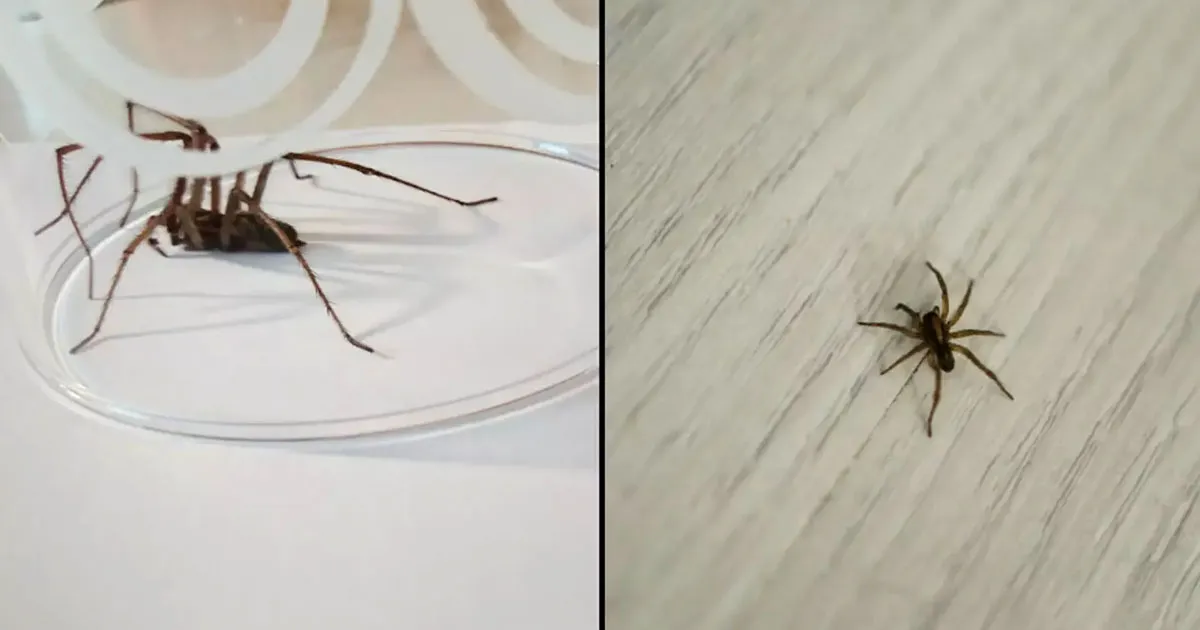What is a Tarantula
Tarantulas are large, hairy spiders belonging to the Theraphosidae family. These fascinating creatures are known for their impressive size, often spanning several inches, and their diverse appearances, ranging from vibrant colors to earthy tones. They are found in various habitats around the world, primarily in warmer climates. Despite their intimidating appearance, most tarantula species are not considered highly dangerous to humans. Their venom, while present, is generally less potent than that of other venomous spiders, and their bites are often compared to a bee sting. Understanding what a tarantula is sets the stage for dispelling common myths and providing accurate information about these intriguing arachnids. They play a vital role in their ecosystems as both predators and prey.
Appearance of Tarantulas
Tarantulas come in a variety of shapes, sizes, and colors, which can vary significantly depending on the species. Their bodies are typically divided into two main parts: the cephalothorax (fused head and chest) and the abdomen. The cephalothorax houses the spider’s eyes, mouthparts, and legs. The abdomen contains the internal organs. Covering their bodies are numerous hairs, some of which are urticating hairs used for defense. These hairs can irritate the skin and eyes of potential predators. Their legs are long and covered in hairs, which help them to navigate their environment. The chelicerae, or mouthparts, are located near the front of the cephalothorax and are used for grasping and injecting venom. The pedipalps, which resemble small legs, are used for sensing the environment and for mating in males.
Size and Color

The size and color of tarantulas are as varied as their species. Some tarantulas, like the Goliath birdeater, can have a leg span of over 10 inches, making them among the largest spiders in the world. Smaller species, such as the Trinidad chevron tarantula, are considerably smaller. Coloration ranges from browns, blacks, and grays to vibrant blues, oranges, and yellows. The coloration often serves as camouflage, helping the spider to blend in with its surroundings, such as the forest floor or tree bark. Some species exhibit different colors at different stages of their lives, adding to the diversity of their appearances. The variety in size and color is one of the most captivating aspects of tarantulas, making each species unique and fascinating to observe.
Habitat and Behavior
Tarantulas are found in a wide range of habitats, predominantly in tropical and subtropical regions around the world. They are well-adapted to environments with warm temperatures and moderate humidity. Their natural habitats include forests, grasslands, deserts, and even urban areas. Most tarantulas are terrestrial, living on the ground in burrows, under rocks, or in crevices. Some species are arboreal, residing in trees. Their behaviors are largely influenced by their environment. These nocturnal hunters typically spend the day in their burrows or shelters and emerge at night to hunt for prey. They have various strategies for capturing food, including ambushing or actively pursuing their targets.
Where Do Tarantulas Live
Tarantulas have a global distribution, thriving in warmer climates across the Americas, Africa, Asia, and Australia. In the Americas, they can be found in both North and South America, from the southwestern United States to the rainforests of Brazil. Africa is home to several species, particularly in the tropical regions. In Asia, tarantulas are found across various countries, including India, Thailand, and Indonesia. Australia also hosts a variety of tarantula species. Their choice of habitat often depends on the species and their specific environmental needs, such as suitable temperatures, humidity, and the availability of food and shelter. This wide range of habitats demonstrates their adaptability to diverse ecosystems.
Tarantula Behavior

Tarantulas exhibit a range of behaviors that are essential for their survival. As nocturnal hunters, they are most active during the night, when they venture out to search for prey. They use their chelicerae to inject venom, which immobilizes their victims. Their diet consists primarily of insects, but larger tarantulas can also prey on small vertebrates like lizards and rodents. They are ambush predators, waiting patiently for prey to come within striking distance. Defense mechanisms include the use of urticating hairs, which they can flick towards potential threats to cause irritation. They are solitary creatures, except during mating season, and tend to avoid each other. They also construct burrows or shelters, which serve as protection from predators and the elements.
Why a Tarantula Might Be in Your House
Finding a tarantula in your house can be an unsettling experience, but understanding the reasons behind their presence can help alleviate some of the fear. Several factors might lead a tarantula to enter your home. It is important to note that tarantulas are generally not aggressive and are more likely to try and escape than to attack. They are opportunistic creatures and their presence is often accidental. The factors that influence their entry include shelter, mating season, and accidental entry, all of which provide insights into the circumstances that could bring these spiders indoors. Knowing these reasons helps in taking the right steps to deal with the situation.
Seeking Shelter
One of the primary reasons a tarantula might enter your house is to seek shelter from unfavorable weather conditions or environmental threats. During periods of extreme heat, cold, or heavy rainfall, tarantulas may look for more stable and protected environments. Your home can provide a safe haven, offering a consistent temperature and protection from predators. They are also often attracted to the presence of potential prey inside your house, such as insects. Openings in the foundation, around windows, or under doors can serve as entry points. They will explore these openings, especially when the outside conditions become challenging. Ensuring your home is sealed properly can minimize the chances of a tarantula seeking shelter indoors.
Mating Season

The mating season is another significant factor that can lead to a tarantula in your house. During this period, which often occurs in late summer or early fall, male tarantulas actively search for mates. They may travel long distances, increasing the likelihood of them entering homes. Male tarantulas wander, often in search of receptive females. The presence of a female tarantula, either inside your home or nearby, can also attract males. The males might inadvertently enter your house while looking for a mate. During this time, it is more common to find tarantulas wandering around, which increases the chances of encounters. Knowing that it is mating season can help you understand why you might find one in your house.
Accidental Entry
In many cases, a tarantula’s presence in your house is simply an accident. They may inadvertently enter through open doors, windows, or other access points while foraging or wandering. They are not intentionally trying to invade your home. Their entry is more likely due to opportunistic exploration. They can also be brought in unintentionally, such as by hitchhiking on firewood, plants, or other items brought inside. These accidental entries highlight the importance of inspecting items before bringing them into your home. If you live in an area with a tarantula population, accidental entry is a common way for these spiders to appear in your house, and it is essential to remain calm and use appropriate methods for their removal.
Health and Safety
Although tarantulas are generally not aggressive, it is important to handle any encounter with one safely. Understanding the potential risks and knowing what to do can help protect yourself and others. They are not usually dangerous, but it is wise to take precautions. While the venom of most tarantulas is not life-threatening to humans, their bites can be painful. They can also cause localized reactions. They possess urticating hairs that can cause skin irritation. Always approach a tarantula with caution and avoid any unnecessary contact. This approach is critical for ensuring your safety and minimizing the chance of any issues.
Are Tarantulas Venomous

Yes, all tarantulas are venomous, but the potency of their venom varies among species. Generally, tarantula venom is not considered highly dangerous to humans. Their bites are often compared to a bee sting in terms of pain and effect. The venom is used to subdue their prey. Bites typically cause localized pain, redness, and swelling at the bite site. Allergic reactions are rare. Most tarantulas are reluctant to bite, preferring to flee or flick their urticating hairs as a primary defense mechanism. If bitten, it is important to clean the area with soap and water, and monitor for any signs of an allergic reaction. Medical attention is usually not required unless symptoms worsen significantly.
What to Do If You See a Tarantula
If you encounter a tarantula in your house, remain calm and assess the situation before taking any action. The first step is to maintain a safe distance. Do not attempt to handle or provoke the spider. Observe its behavior to determine if it seems agitated or threatened. If you can safely do so, try to contain the tarantula. You can gently cover it with a container, like a jar or a plastic bin. This prevents the spider from escaping and allows you to safely capture it. Have someone contact a professional pest control service, especially if you are unsure how to handle the spider or if you are uncomfortable with the situation. Clear the area of pets and children. Following these steps can ensure your safety. The most important thing is to handle the situation with care.
How to Catch and Release a Tarantula
Catching and releasing a tarantula is a humane option for dealing with the spider in your home. First, you need a container large enough to cover the tarantula completely. A clear container, like a large jar or plastic bin, allows you to see the spider. Carefully place the container over the tarantula, ensuring the opening is covering the spider completely. Gently slide a piece of cardboard or a stiff piece of paper under the opening to seal it. This will prevent the spider from escaping. Carry the container outside to a safe area. Release the tarantula away from your home and any areas where it might encounter people or pets. Gently tip the container over, allowing the spider to walk out. Avoid touching the spider. Release them in an area with appropriate habitat. This will ensure the tarantula can thrive. Make sure to wash your hands thoroughly.
When to Contact a Professional

There are several situations where contacting a professional pest control service is the best course of action. If you are unsure about the species of tarantula or its potential danger, it is safer to seek expert assistance. If you have multiple tarantulas in your house or are experiencing frequent encounters, it may indicate a larger problem. If you are uncomfortable with the idea of handling a tarantula, do not hesitate to call for help. Professionals have the knowledge, tools, and experience to safely remove the spider. They can also inspect your home for potential entry points and provide recommendations for preventing future encounters. Pest control services can offer peace of mind, knowing that the situation will be handled correctly. Prioritize your safety and well-being by reaching out for professional help when needed.
